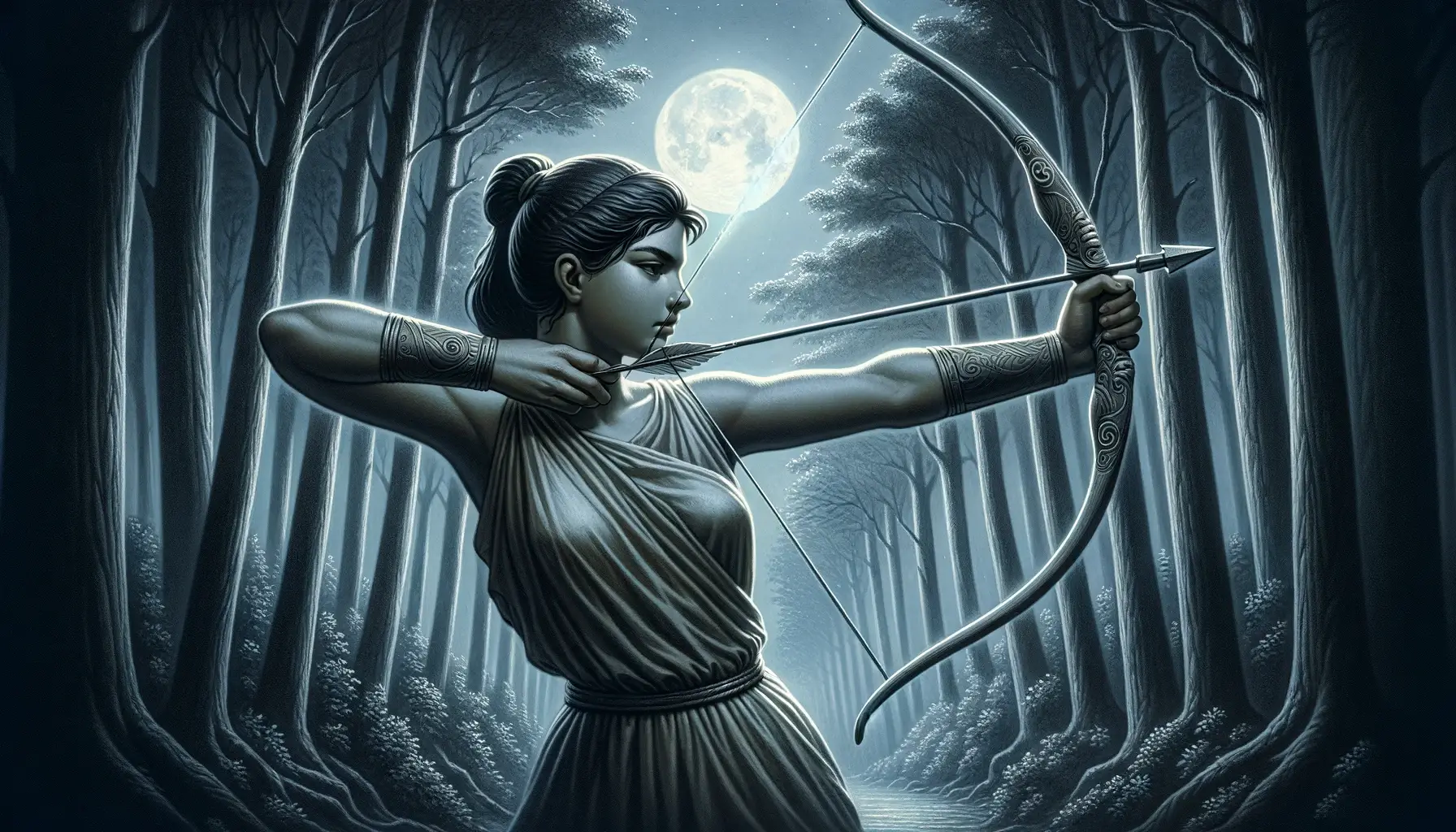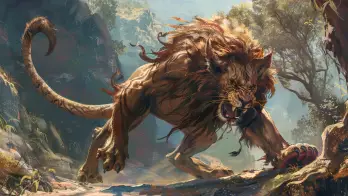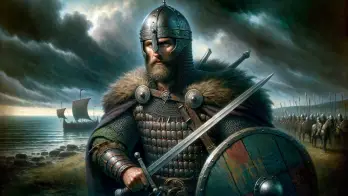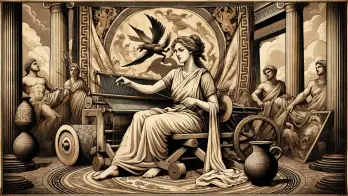The Birth of the Wilderness Queen
Our story begins, as so many do, with a birth. But not just any birth. The birth of Artemis and her twin brother, Apollo, was the stuff of legends. Their mother, Leto, endured a labor under the relentless persecution of Hera, Zeus’ wife, who was none too pleased with her husband’s extramarital adventures. Enraged by her husband’s infidelity, Hera forbade Leto from giving birth on terra-firma or any island at sea. Artemis was born first, on the floating island of Delos, and immediately showcased her precocious nature by assisting in the birth of her brother, Apollo; an act that helped to establish Artemis as the goddess of childbirth. This miraculous birth set the stage for a life that was anything but ordinary.
The Six Wishes: Crafting Her Identity
As a young goddess, Artemis approached Zeus with six wishes that would define her divine roles and attributes. These wishes included eternal virginity, signifying her independence and autonomy; a bow and arrows, like those of Apollo, symbolizing her role as a huntress; a knee-length tunic, to aid in her mobility during the hunt; sixty Oceanid nymphs to be her companions; all the mountains as her domain; and the ability to assist women in childbirth. Zeus granted these wishes, setting Artemis on her path as a powerful and multifaceted goddess.
Wilderness and Wildlife
Artemis is intimately linked with the natural world. As the goddess of the hunt, she roamed the forests and mountains, accompanied by her band of nymphs and a pack of hunting dogs. She was both protector and hunter of wildlife, embodying the untamed and unpredictable nature of the wilderness. Artemis was not just a hunter; she was the embodiment of the hunt itself. Her wilderness realm represented the untamed heart of the world where beasts roamed free, much as did she.
Fierce Protector and Punisher
Artemis fiercely protected her purity and the wellbeing of her followers, especially young women. One of the most famous tales illustrating her protective nature is that of the Aloadae giants, who attempted to reach Olympus by stacking mountains atop one another. Artemis intervened, disguising herself as a deer and leaping between them, causing them to accidentally kill each other with their spears.
In another legend, the hunter Actaeon accidentally witnessed Artemis bathing. In response, she transformed him into a stag, and he was subsequently torn apart by his own hunting dogs. This story highlights not only her protective instincts but also her capacity for ruthless retribution.
The Goddess of Many Faces
Artemis wore many hats – or, in her case, many crowns. Her influence extended beyond the forests and mountains. She was not only the goddess of the hunt and the wilderness, but was also venerated as a goddess of childbirth and virginity, assisting with the safe delivery of children and protecting young girls until marriage.
Her symbolism as a protector of young women and a bringer of sudden death or illness, especially in women, makes her a complex figure. She was both revered and feared, a deity who could offer protection or bring doom with equal ease. Furthermore, she was often associated with the moon, casting her as a deity of light and purity.
Myths and Legends: The Stories That Define Her
Many myths showcase Artemis’s strength and independence. For instance, her interaction with Orion, a skilled hunter, demonstrates her complex nature. According to some versions, they were companions, perhaps even sharing romantic feelings. However, Apollo, protective of his sister’s chastity, tricked Artemis into killing Orion, mistaking him for a distant target.
Another tale involves the Aetolian heroine Atalanta, a skilled huntress who participated in the Calydonian Boar Hunt, a mission Artemis set to punish King Oeneus. Atalanta, often compared to Artemis, was the first to wound the boar, further linking the goddess to themes of female strength and prowess.
Artemis and the Modern World
Artemis’s influence extends far beyond ancient Greece. She has been a figure of fascination in art, literature, and modern neopaganism. As a symbol of female empowerment and independence, she resonates with contemporary themes of feminism and environmentalism. Her connection with nature and wildlife conservation efforts underscores her enduring relevance.
In today’s world, it’s perhaps unsurprising that Artemis still captivates our imagination. She represents a blend of strength, independence, and the wild, untamed aspects of nature and humanity. She’s a feminist icon and a reminder of the power that women can command when unfettered by societal norms.
A Moonlit Legacy
Artemis’s legacy is as bright as the moon with which she’s often associated. With her complex blend of strength, independence, and connection to the natural world, Artemis continues to captivate and inspire. Her tales and attributes reflect the multifaceted nature of women and the wilderness, making her a timeless figure in mythology and beyond.
Remember, mythology isn’t just a collection of stories; it’s a window into the values, fears, and hopes of ancient cultures. Keep reading Ancient-Theory.com for more tales and legends from the pantheon of Greek mythology.
At Ancient Theory we only use trusted sources to document our articles. Such relevant sources include authentic documents, newspaper and magazine articles, established authors, or reputable websites.
- Theoi Greek Mythology: An exhaustive resource detailing the Greek gods and goddesses, including their myths, symbols, and representations in ancient art and literature. [Source]
- Greek Mythology.com: Offers comprehensive insights into the gods, goddesses, heroes, and events of Greek mythology. [Source]
- Ancient History Encyclopedia: Provides historical and cultural context to the myths and legends of ancient Greece. [Source]






